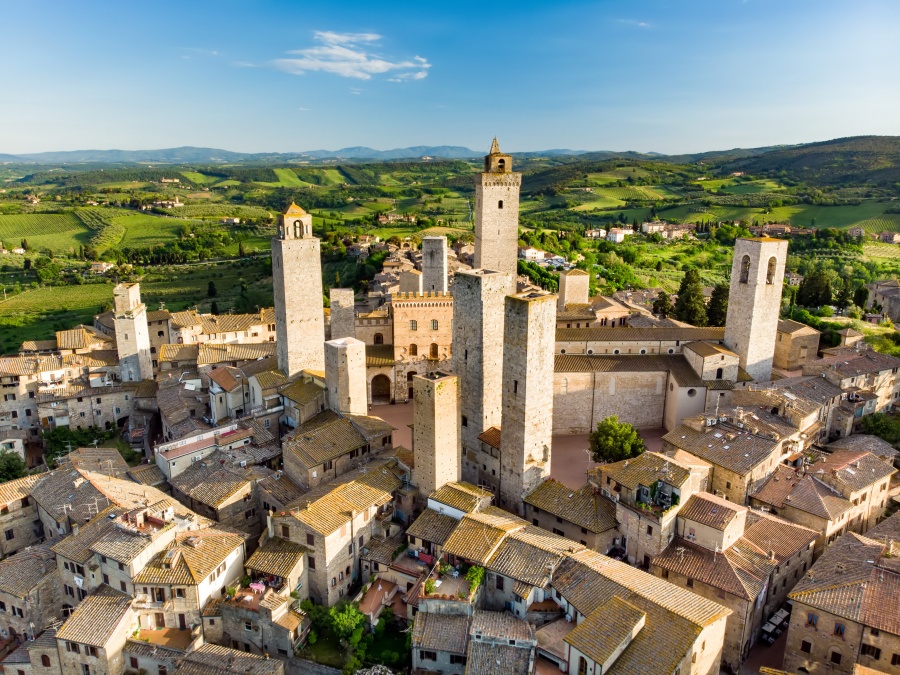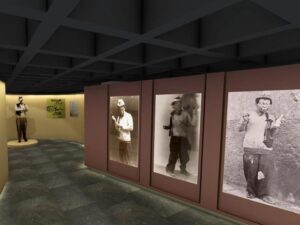
The jewel of Tuscany, and undoubtedly one of the greatest riches of Italy, is Florence. This city is so beautiful that some people have suffered from the so-called Stendhal syndrome, a psychosomatic disorder caused by exposure to its artistic wealth.
However, the city of Dante is also the capital of one of the most famous and visited regions of the country: Tuscany.
Although there are tours that invite us to try a bite of the area, touring it at our own pace and getting to know some of its towns and cities without rushing is a great experience.
In Alan around the World, we gave you a small list of places to visit in Tuscany (besides Florence) that cannot be missed.
Siena
This city shared the limelight and a certain rivalry with Florence and no wonder. Its medieval buildings and its cultural, historical and artistic importance earned it the status of a UNESCO World Heritage Site in 1995.
Among its must-sees is the Siena Cathedral, which dates back to the 13th century and is famous for its impressive black and white marble façade.
The architecture is a reason to visit it by itself, the Basilica of Santo Domingo, the Communal Palace or the Piazza del Campo, where twice a year the Palio di Siena (a horse race of medieval origin) takes place are a excellent plan.

Saint Gimignano
At the top of a hill is medieval Manhattan, or almost. San Gimignano is a small walled town recognized worldwide for its towers, which have survived time (15 of the 75 it had hundreds of years ago).
Tours that pass through Tuscany often include two hours in San Gimignano, which could be enough to appreciate the Piazza della Cisterna, Piazza del Duomo, Piazza Pecori and Piazza delle Erbe. As well as Via San Giovanni, the main street that runs through the town and is lined with souvenir shops.
However, at the end of the tourist hustle and bustle in the evening, walking through its streets in almost complete solitude is an experience that we recommend at Alan around the World. One night is enough to feel like you are in a medieval tale.
Volterra
Located in the province of Pisa (city beyond its leaning tower), this municipality is a journey through history through its buildings and art from the Etruscan, Roman, Medieval and Renaissance periods.
The Roman theater, the famous Porta all’Arco and the solid walls that surround its medieval quarter stand out.
Montefioralle, Montalcino and Montepulciano
In Italy you eat well and one of its best-known gastronomic products worldwide is wine, and Chianti is one of the most prestigious and well-known. Produced in the valley that gives it its name, one of the main wine events in the country takes place at the Chianti Classico Expo in Montefioralle, which allows you to taste and meet the region’s producers amid charming cobblestone streets with close of 100 inhabitants.
Another of the famous wines in the region is Brunello, produced in Montalcino, a town mentioned in historical documents since the year 814. In addition to having a good glass of wine, visitors can visit the Chiesa di Sant’Agostino (built in the 13th century), the Duomo, Piazza del Popolo and the Musei Riuniti.
Finally, in Montepulciano Gothic buildings such as the Town Hall are concentrated in Piazza Grande. After visiting the cathedral and the church of San Agostino, it is worth having one of its most famous drinks: the Vino Nobile de Montepulciano.

Cortona
Located on the border with Umbria, this municipality in the province of Arezzo had a surge in visits after the release of the book and the film Under the Tuscan Sun. However, its history dates back to the 8th and 7th centuries BC. C., when it was an important Etruscan settlement.
In addition to impressive views of the Val di Chiana, its cathedral, the churches of San Francesco and Santa Maria delle Grazie al Calcinaio, by the famous Sienese architect Francesco di Giorgio Martini, stand out. In addition, the Palazzo Comunale and the museums dell’Accademia Etrusca and the Diocesano.
Pitigliano
Known as “Little Jerusalem” (Piccola Gerusalemme) for the huge migration of Jews to the area in the 16th century, when Pope Pius IV expelled them from Rome, the first Etruscan settlements date back to the 12th century BC. c.
In addition to visiting Piazza Petruccioli, where the Palazzo Orsini is located with its Archaeological Museum, and the Museum of Sacred Art, where the work Madonna with Bambino by maestro Jacopo della Quercia is exhibited, you cannot miss the Synagogue of Pitigliano, one one of the most characteristic monuments of the historic center.
Lucca
Finally, a trip through Tuscany would not be complete without a visit to Lucca, which has traces of nearby settlements from Paleolithic times. Its name would come from the Celtic “luck”, place of malaria, however, it was founded by the Etruscans and would later become part of the Roman Empire.
The Cathedral of San Martín has a Tuscan Gothic style and if you decide to climb its 60-meter tower to the bell tower, you will have an incredible view of the city, which is one of the only ones that preserves almost 100 percent of its walls (almost 4 kilometers and a half of walls 12 meters high).
The Guinigi Tower and Palace, the lively Via Fillungo and the Amphitheater Square are a must-see.
Source: https://alanxelmundo.com/pueblos-y-ciudades-imperdibles-en-la-toscana/?utm_source=rss&utm_medium=rss&utm_campaign=pueblos-y-ciudades-imperdibles-en-la-toscana

